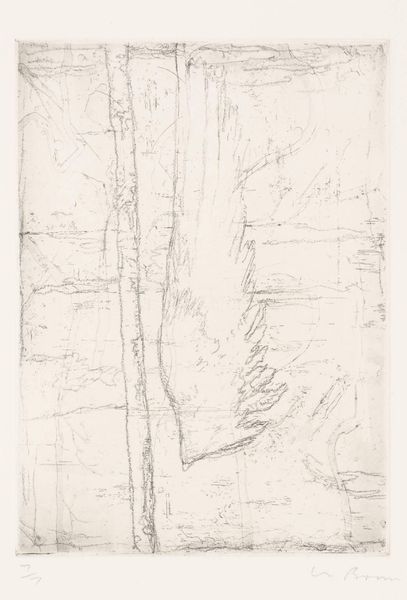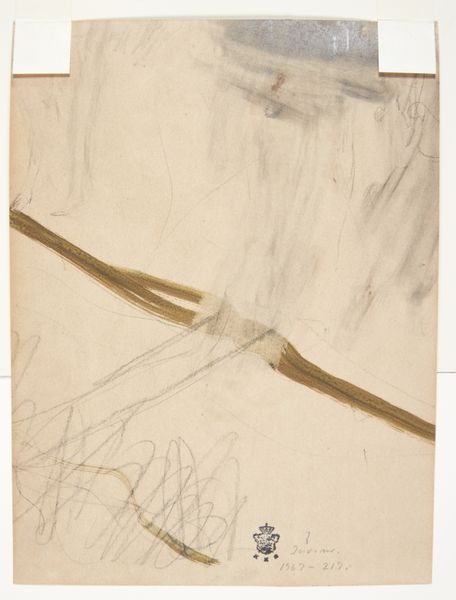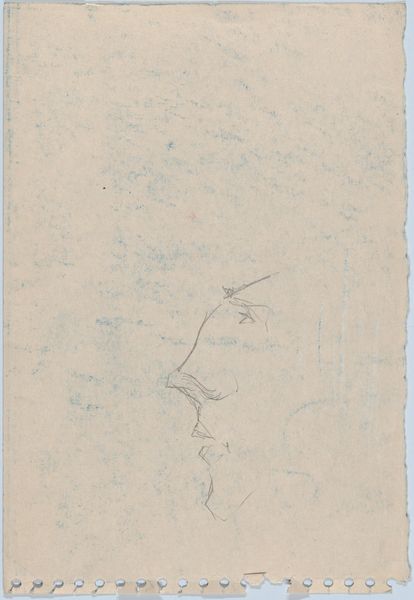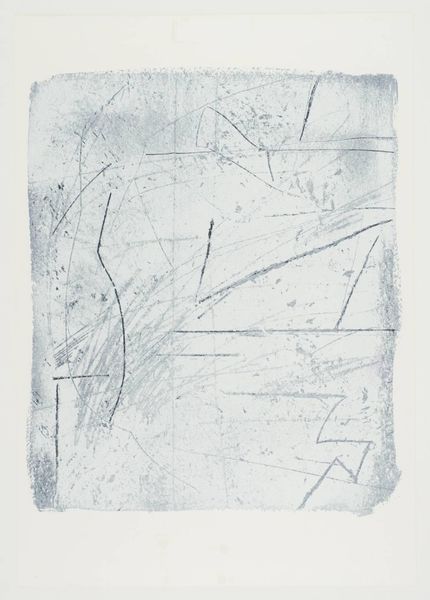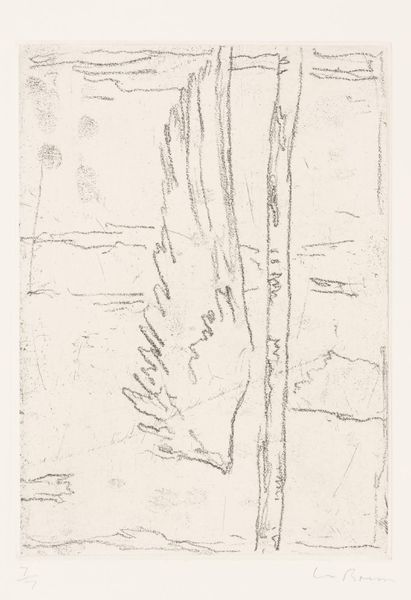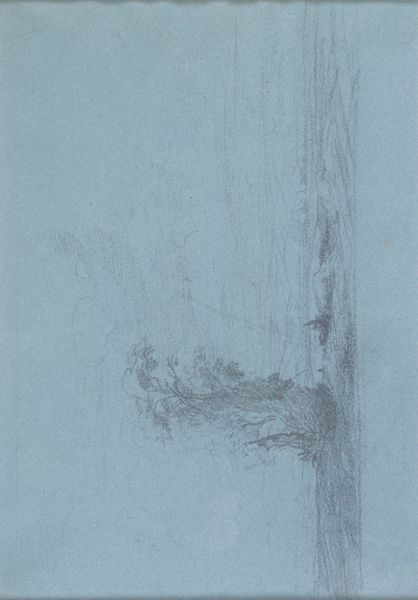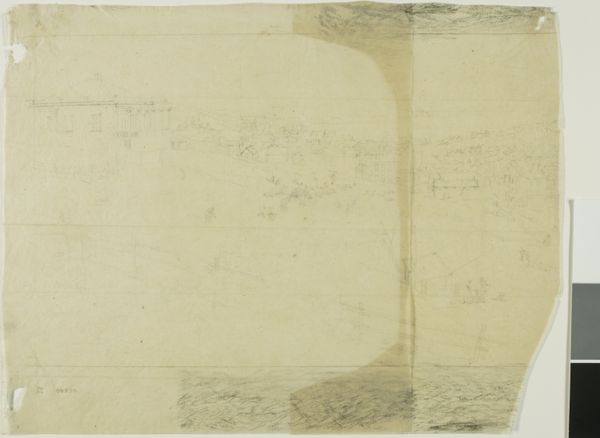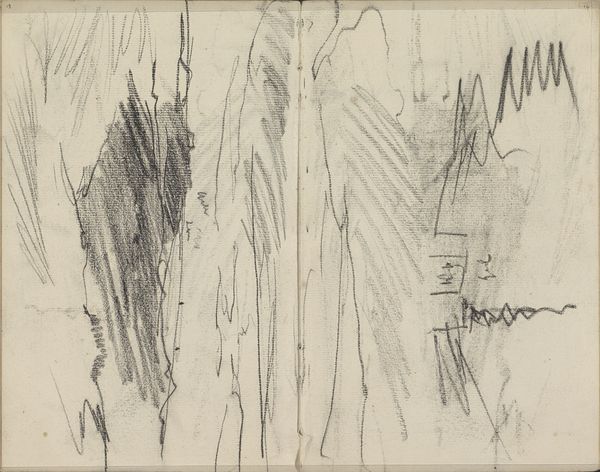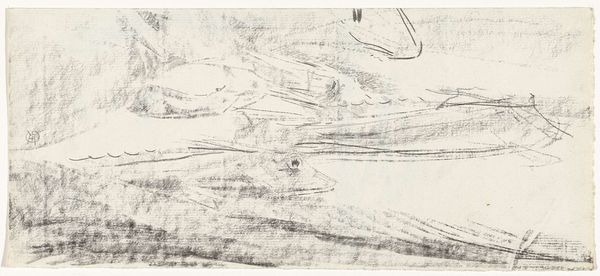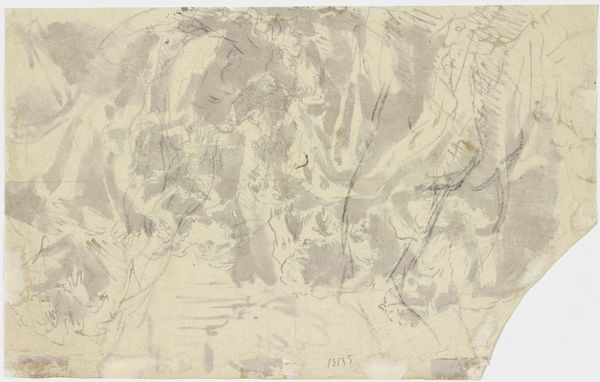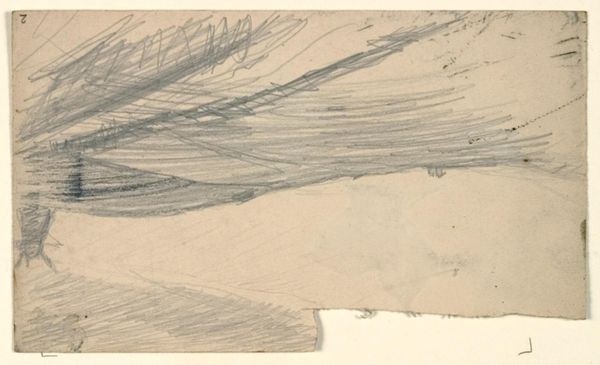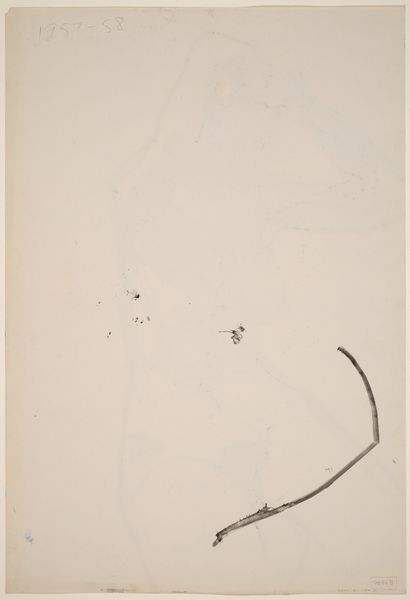
drawing, pencil, architecture
#
drawing
#
medieval
#
pencil sketch
#
geometric
#
pencil
#
line
#
architecture
Dimensions: 134 mm (height) x 92 mm (width) (bladmaal)
Curator: Martinus Rørbye created this delicate pencil drawing titled "Fragment af gotiske hvælv" sometime in the 1840s. Today, it resides here at the SMK, Statens Museum for Kunst. Editor: Oh, there's a fragile beauty to it. At first, it just appears to be faint lines, but they gradually build this grand, gothic feeling of something that once held massive amounts of history. Curator: The lines absolutely guide our understanding. Note how Rørbye utilizes simple geometric forms to convey not just a structure, but a sense of soaring space. Architectural renderings like this, studies of vaulting, were fairly common within his oeuvre and reflect a broader interest in architectural preservation in the 19th century. It points back towards memory and the medieval imagination, an artistic yearning for simpler times perhaps? Editor: Maybe he felt as though history was being lost, or becoming… well, abstracted, even back then. You feel that desire in the unfinished parts. Were the marks deliberately minimal, or was it more a study left behind? I bet some see the lack of certainty in those strokes, that searching, like he was trying to capture something fading right before him. Curator: Precisely. What we read as incomplete also allows us to impose our own projections onto the architectural space; the gothic, the ruinous...it becomes something quite dreamlike! It lets the architecture become a carrier for other ideas, more emotional concepts. That medieval longing continues! Editor: Totally. Like we're filling in the silence. He hands us these scraps of space and then ghosts out before it's even realized, knowing that in between those lines lies our own sense of gothic wonder or melancholy. Curator: It becomes then, as all good images do, an active engagement. I'm reminded how drawings in particular retain that special sense of intimacy, that trace of the artist’s touch. We feel his presence reaching toward something monumental, and find that intimacy quite poignant in the face of looming arches! Editor: It's like he left it up to us to dream the cathedral back into being. The past's loss becoming our creative present. How great is that!
Comments
No comments
Be the first to comment and join the conversation on the ultimate creative platform.
